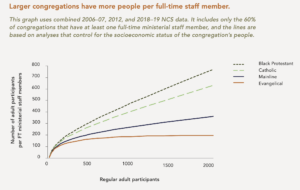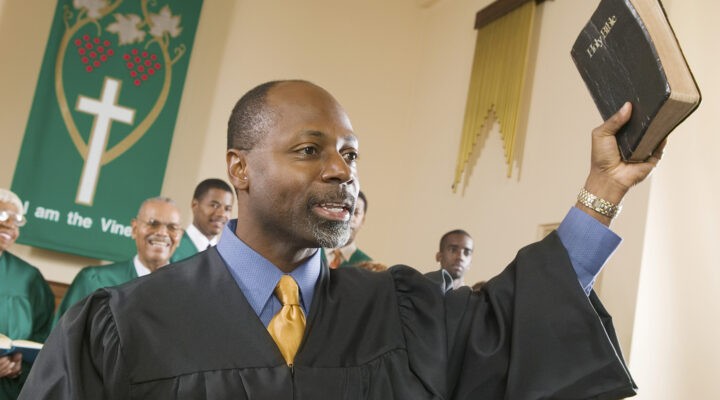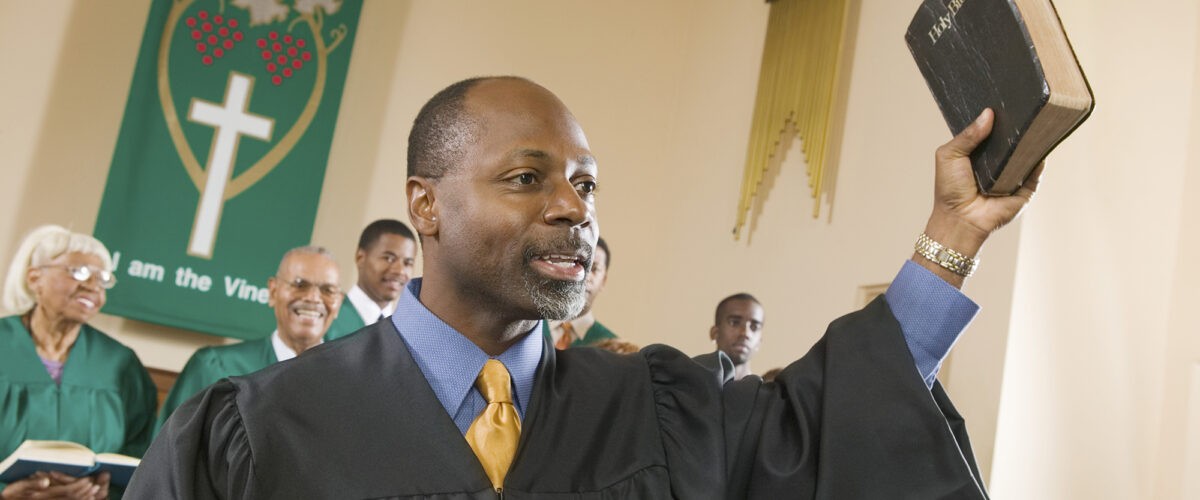The iconic Americana image of a solo pastor faithfully tending the flock of a local congregation remains a reality for more than half of U.S. congregations, but that is not the reality most American churchgoers experience.
Combined with the report that the majority of American congregations are small but the majority of American churchgoers attend large congregations is a detailed portrait of U.S. clergy obtained through the National Congregations Study.
In America today, 54% of all faith congregations are led by a solo minister or appointed leader, whether full-time, part-time or unpaid. Another 16% of U.S. congregations employ two ministerial staff, while only about a fourth (28%) employ three or more clergy.
Yet those multi-staff congregations — employing assistant, associate and specialized ministers — are responsible for hiring a majority of the nation’s ministerial work force. These associates in multi-staff congregations account for 54% of all ministerial positions — 41% of all full-time positions and 70% of all part-time positions.

The study found 23% of U.S. faith communities are led by a paid part-time leader and 19% are led by unpaid volunteers. About three-fifths of congregations employ a paid full-time leader. One-fifth have a paid part-time leader, and another fifth are led by unpaid volunteers.
Including special circumstances — such as Mormon congregations that always are led by volunteers — only 48% of U.S. congregations with fewer than 100 regularly participating adults have a full-time paid leader. That compares to 79% of congregations with 100 to 199 participants and 95% of congregations with at least 200 participants.
Roman Catholic and white mainline Protestant congregations are most likely to be led by full-time clergy who are paid, while only about half the primary leaders of predominantly white evangelical churches (55%) and Black Protestant churches (50%) serve as full-time paid leaders.
The NCS found that pastoral leaders who do not serve a single congregation full time generally make ends meet either by serving several congregations or holding another job.
In other staffing-related findings, the NCS reported:
- About half (55%) of full-time ministerial staff beyond the primary leader specialize in one area, while three-quarters (74%) of part-time ministerial staff beyond the primary leader specialize.
- Religious education is the most common specialization of full-time ministerial staff, with one-third (32%) of full-time specialist staff in that area.
- Spiritual growth, music ministry, community engagement, and youth ministry are other relatively common areas of specialization for ministerial staff members who work full-time.
- Part-time secondary ministerial leaders are most often musicians, with 57% of those who specialize focusing on music ministry. Musicians are by far the most common kind of specialist among part-time staff, but other relatively common specialist areas for part-time staff are youth ministry, children’s ministry, spiritual growth, and religious education.
- 5% of congregations have a staff person who spends at least one quarter of their time focusing on technology. Worship-related technology specialists are now about as common in congregations as those who focus on family ministry.
- Solo or senior pastoral leaders are older, more female and more likely to be people of color than they were in 1998.
- 14% of congregations are led by women.
- Compared to solo and senior pastoral leaders, secondary ministerial staff are more female, younger, less likely to be seminary educated, and more likely to have been hired from within the congregation.
- Acceptance of female lay leadership is widespread, with 89% of congregations allowing women to serve on the governing board.
- Congregational acceptance of gays and lesbians as members and lay leaders has increased substantially in recent years, with a majority (54%) allowing openly gay or lesbian people to be full-fledged members and about one-third (30%) allowing openly gay or lesbian people to hold lay leadership positions.
The National Congregations Study is directed by Mark Chaves, the Anne Firor Scott Distinguished Professor of Sociology, and professor of religious studies and divinity, at Duke University. The study is made possible by major grants from Lilly Endowment. The research is based on four nationally representative surveys of congregations from across the religious spectrum — in 1998, 2006-07, 2012, and then 2018-19.
More detailed information, including cross-tabulated data, may be found at the project’s website.
Related articles:
Finances and staff: a difficult but necessary conversation for churches | Opinion by Bill Wilson
Five reasons your church probably isn’t spending too much on personnel | Opinion by Mafk Wingfield
Why church expectations for a youth minister may be unrealistic and how to change them | Analysis by Brian Foreman


